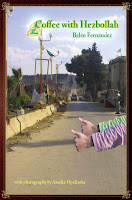 Last November, we set out to explore another region of Argentina: Salta, located in the northwestern knob of the country, close to Bolivia and Chile. The name is shared by both the province and the capital city. It only took a little while for us to confirm the appropriateness of the epithet "la linda" for both localities.
Last November, we set out to explore another region of Argentina: Salta, located in the northwestern knob of the country, close to Bolivia and Chile. The name is shared by both the province and the capital city. It only took a little while for us to confirm the appropriateness of the epithet "la linda" for both localities.The city boasts some stunning examples of colonial architecture (photos here), matched in grandeur by the impressive landscapes of the province. The area also produces wine, particularly Argentina's signature white, Torrontés. We took a day-long tour with a group of mostly European and Australian students to Cafayate (photos here), a center for wine production. So much wine that some enterprising souls also turn it into sherbet. But first, Kurt finally made good on his goal to consume everything - yes, everything - served in the typical parrillada.
Along the way there and back (photos here) we stopped at various rock formations, all designated with names appropriate to their shapes: the monk, the toad, the ampitheater, the nail, and more. We also got opportunities to visit with the goats of a roadside cheese stand and an extremely photogenic llama and his owner, both of whom blended perfectly into the landscape.
Later, back in Salta City, we took the teleferico up Cerro San Bernardo, which offers a different type of landscape as well as great views of the city below (photos here).
We loved the handicrafts we found in Salta, bringing back all sorts of items for our own apartment and our vigorously promoted (!) rental unit: things like footstools, bedside tables, wood and alpaca bowls, and old aguayos (woven poncho-like fabrics). Taxi rides, restaurant meals, admission fees, etc., were all substantially less than in Buenos Aires. Taxis here in Buenos Aires, for example, now start at 4 pesos 60; in Salta, the fares start at 1 peso 50.
But perhaps the most amazing part of our visit was our excursion to the Museo de Arqueología de Alta Montaña, built specifically to house with reverence and dignity the "Niños del Llullaillaco," 3 mummified children of Incan heritage from 500 years ago discovered in 1999 at a volcano located 6,700 meters high in the Andes. This by itself is worth a trip to Salta.
When you go, make sure to stay at Hotel Solar de la Plaza. Great place with great customer service AND the very best restaurant in town, bar none.
And speaking of food (and how could we not?), we were enchanted to find that Salta produces tamales, small but sabrosos, rivalling those of Mexico. Yum.

